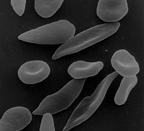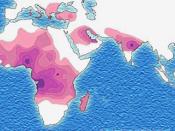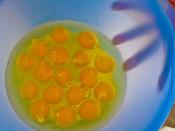Chromosomes
Most cells have a nucleus with a certain number of chromosomes.
There are twenty-three different pairs of chromosomes in human cells.
In females, each chromosome in the twenty-three pairs, appears to be identical to its partner.
In males, one pair is different, one chromosome is shorter than its partner. These two chromosomes are the sex chromosomes.
In females both the sex chromosomes are the same length.
We use an X to represent the longer sex chromosome and a Y to represent the shorter one.
Fertilisation A woman has two X chromosomes, XX, while a man has one of each, XY. The two Xs or the X and Y are separated from each other during meiosis - the cell divisions that form sex cells or gametes. All healthy eggs produced by a human ovary have an X chromosome. However, with sperm, half carry an X and half carry a Y.
A human baby's gender is determined when an egg X is fertilised by a sperm. The baby will be a girl if the sperm is an X sperm. The baby will be a boy if the sperm is a Y sperm. Chance is involved in gender. For example, a family with four children will not necessarily include two boys and two girls. It's a bit like spinning a coin. The family is as likely to have two of each as it is to get two 'heads' and two 'tails' in four spins of a coin. If you were to spin a coin, millions of times, you get roughly equal numbers of 'heads' and 'tails'. The many millions of fertilisations that made the population of the world tend to produce roughly equal numbers of boys and girls.
22 of the 23 pairs of chromosomes in human body cells appear to be...


